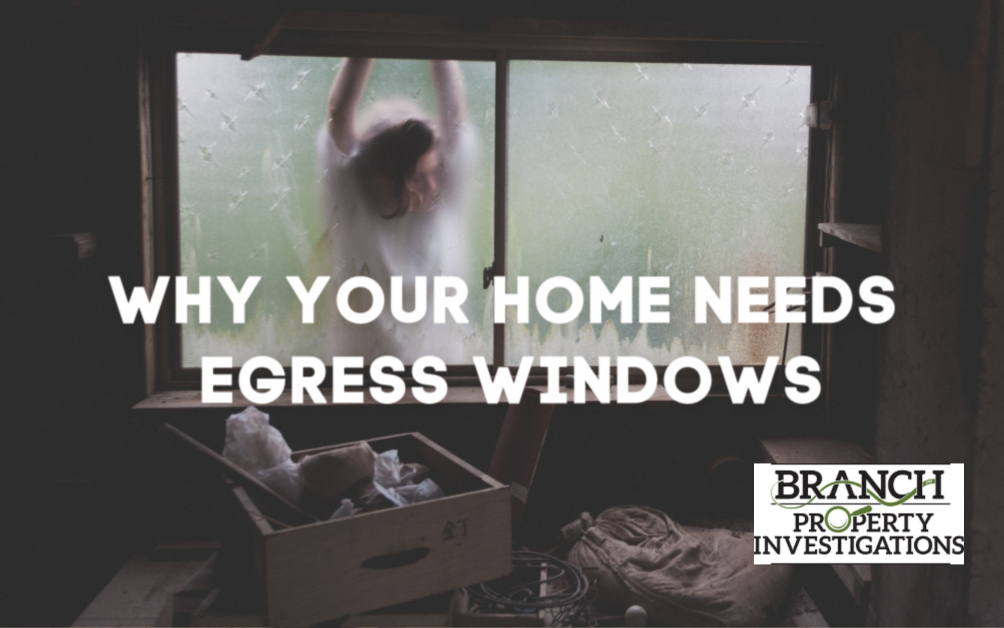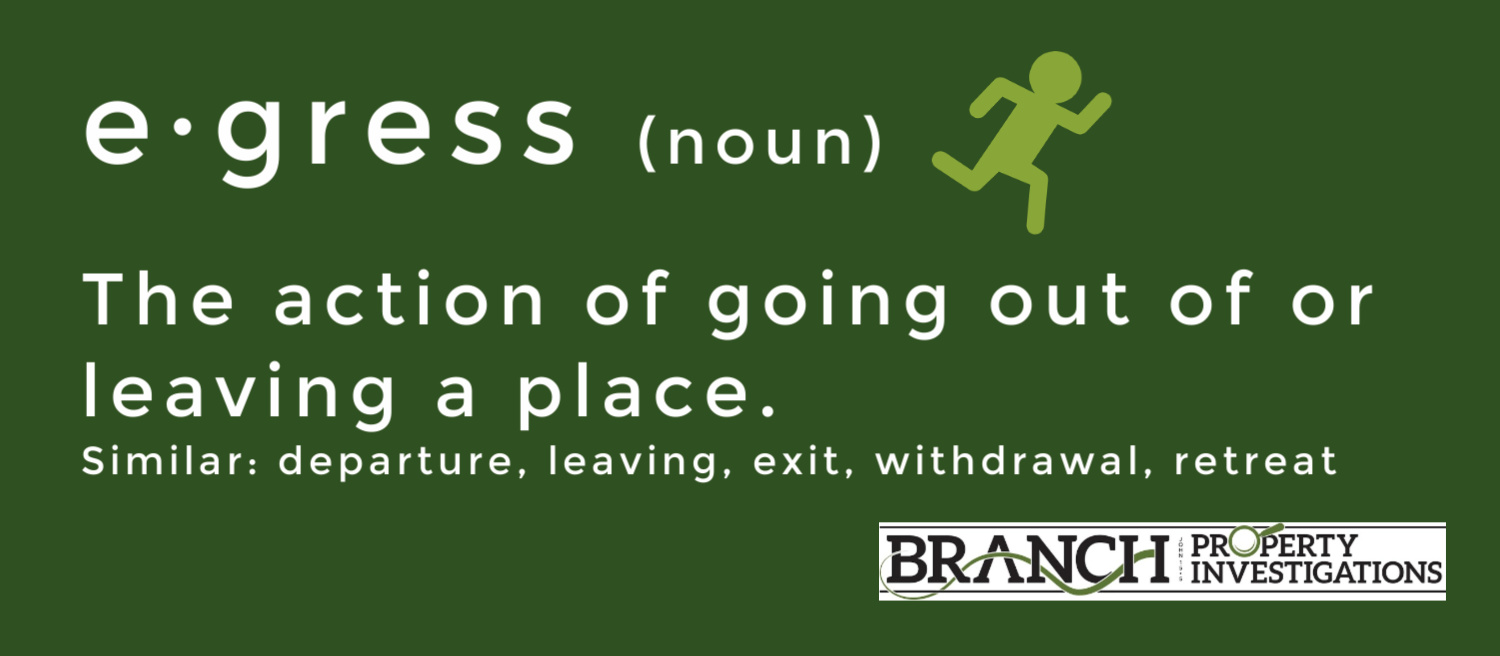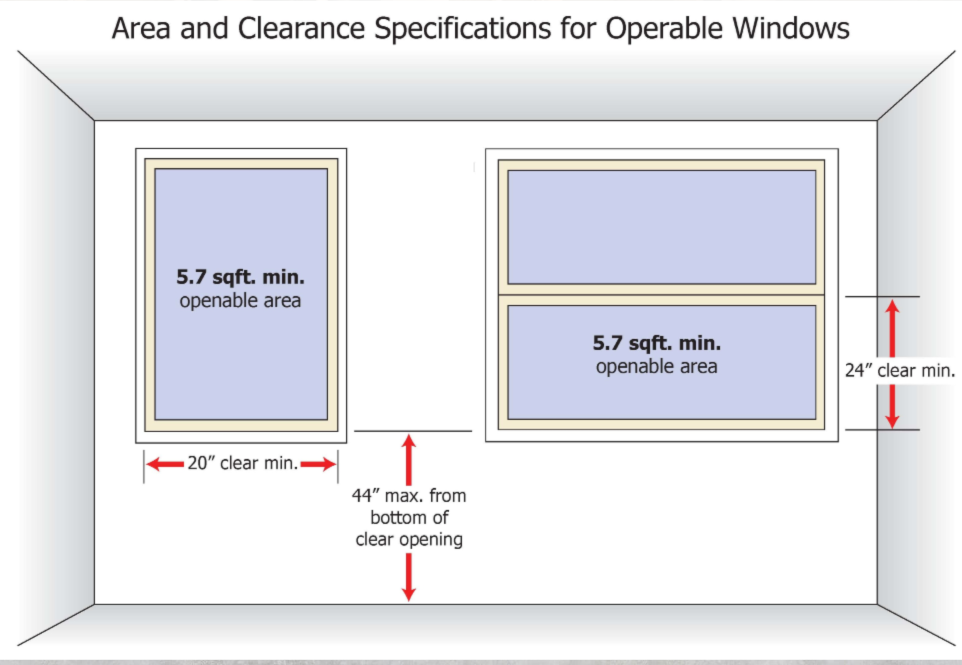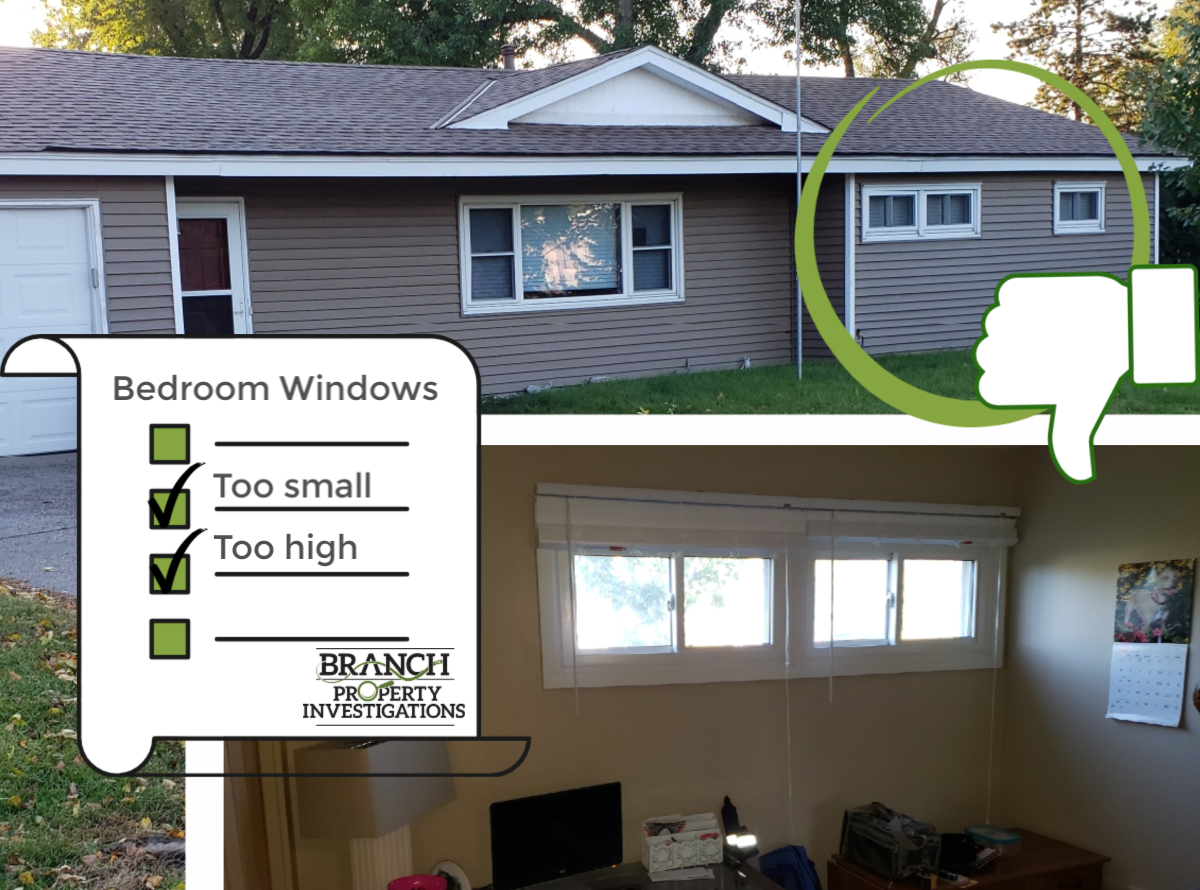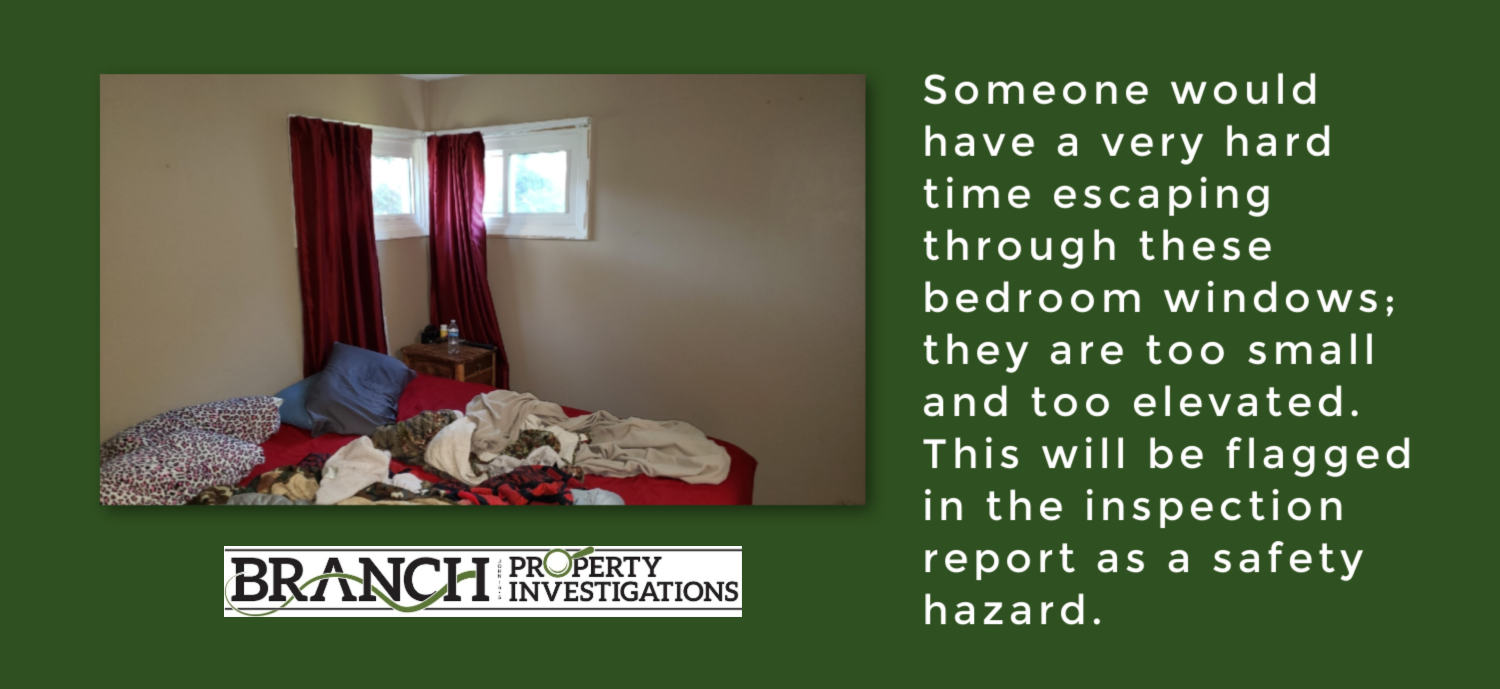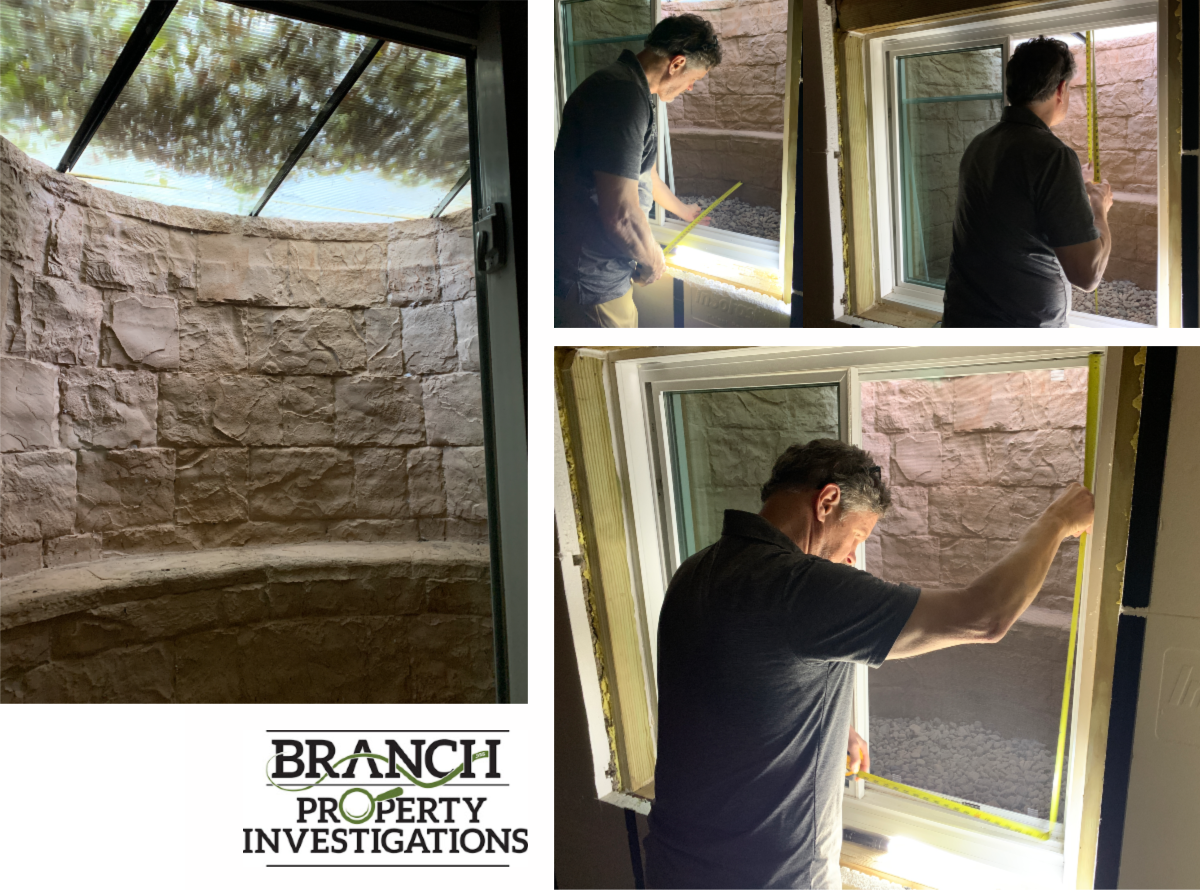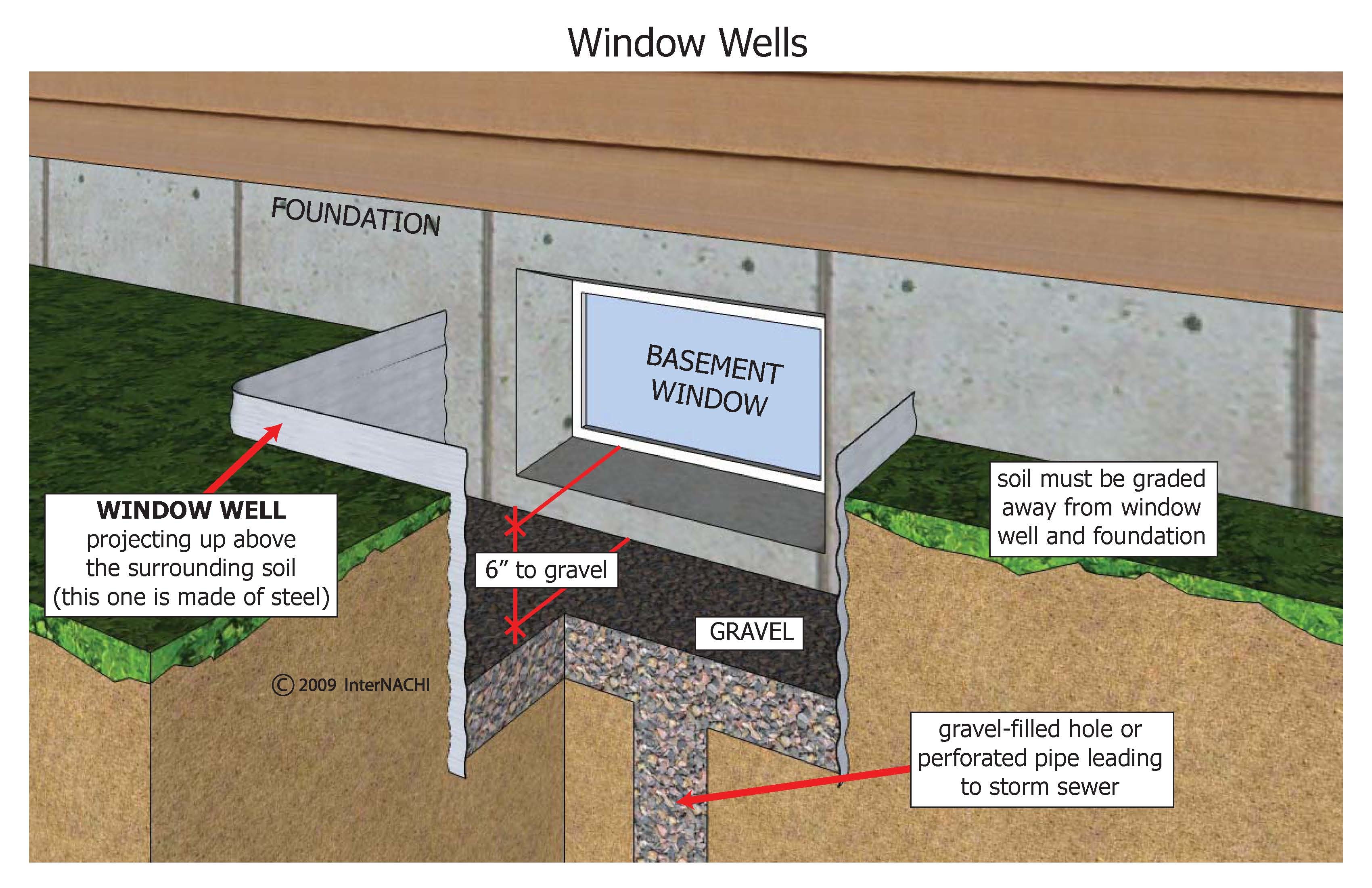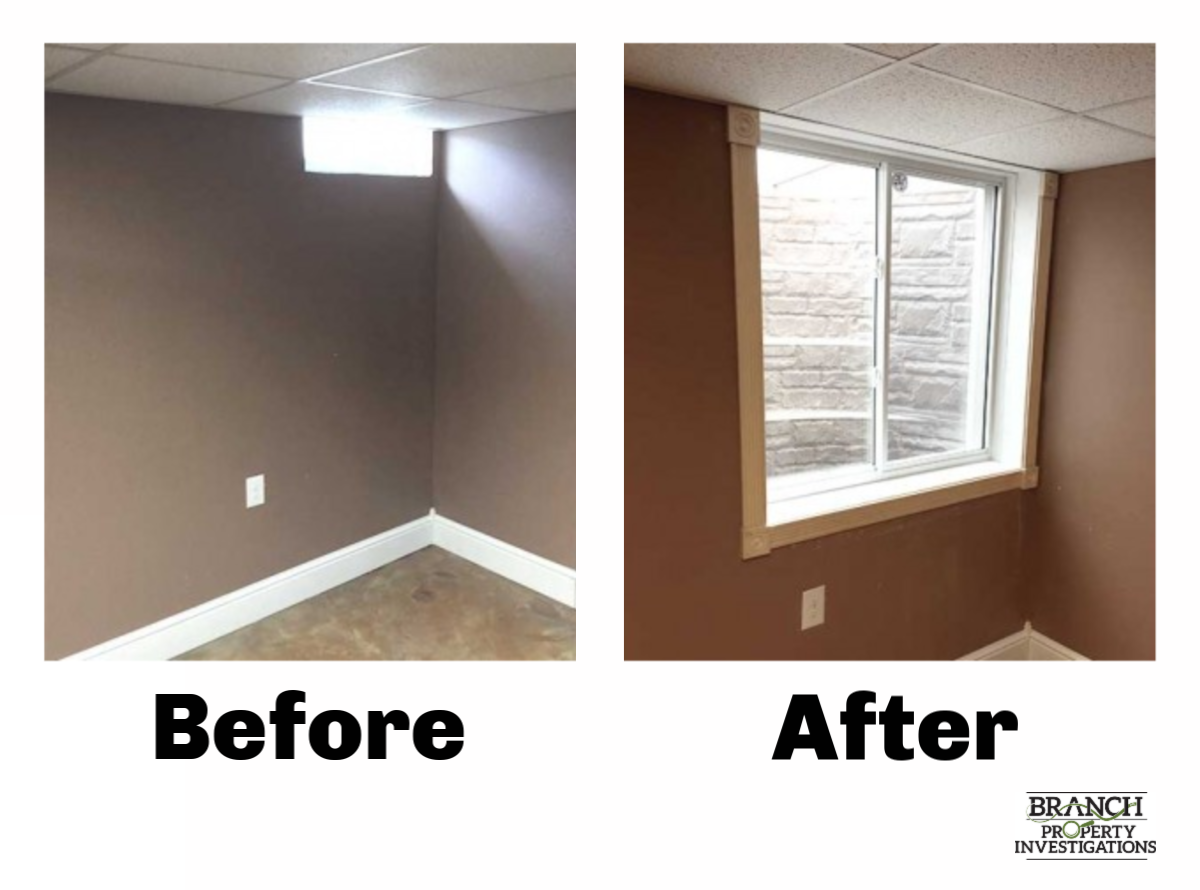In recent weeks I’ve inspected several homes with egress window deficiencies. This is fairly common in older Twin Cities’ homes. They were built long before there were any egress window requirements. People often assume that their property is “grandfathered-in”. The reality is that requirements change over time to protect our safety. Just because you may not be required by your city to make changes to update your home, you may suffer dire consequences if you ignore current egress safety guidelines.
Defining egress
Before we go any further, let’s clarify the term “egress”. Usually, when people use this word they’re referring to the “Emergency Escape and Rescue Opening”. This term makes it clear that this required opening in the building isn’t just for getting out (egress). It’s also there to allow for emergency rescues (ingress).
I see many older-home basements that were legally remodeled into family rooms or offices (which didn’t require egress windows). But then they were later converted into bedrooms (which now do require them). When bedrooms are added to basements without the knowledge of inspectors and without the requisite egress window, they create a dangerous underground firetrap. While the guidelines will require egress windows be installed when bedrooms are added on, they won’t necessarily dictate that windows in existing bedrooms be enlarged to egress size. It’s simply too difficult to monitor every situation.
The definition for an Emergency Escape and Rescue Opening is “an operable exterior window, door or similar device that provides for a means of escape and access for rescue in the event of an emergency.” This description is pretty self-explanatory. I included the definition to make it clear that the opening doesn’t need to be a window. It just needs to be an opening big enough to get people in and out.
Here are the specifics
If you live in Minnesota, feel free to check out the MN State Building Code. It has all the specifics but here is a list of the basics I point out routinely during inspections:
- Basements, habitable attics and sleeping rooms need to have an egress opening.
- The width of the opening must be at least 20″.
- The height of the opening must be at least 24″.
- The bottom of the required opening must be within 44″ of the floor.
The net clear opening must be at least 5.7 square feet for all below-grade egress windows. (This is where the bottom of the egress window is below ground level.) For windows that are at or above ground level, the net clear opening must be at least 5.0 square feet.
Common Sense
You don’t need to be a home inspector to realize someone would have a hard time escaping through a small window that’s close to the ceiling. I always flag this as a safety defect in my inspection report and recommend correction of the issue.
Rooms like this can be utilized as home-offices, exercise rooms or play-spaces but should not be used as bedrooms.
Window wells must be at least 3′ x 3′. They must allow the window to open fully. If the window well is more than 44″ deep, a ladder is required.
Additionally, If there’s a deck or porch above the basement window well, at least 36″ of headroom is needed.
In this particular Richfield home, the window was large enough. But the window-well step did not meet ladder requirements to egress safely to the backyard.
Exceptions to the Rules
Here are some exceptions that are special to Minnesota (feel free to reference the MN Department of Public Safety – State Fire Marshal Division):
- If the home is fully protected by an automatic sprinkler system, no egress opening is required in basement bedrooms.
- Replacement windows are allowed to reduce the window opening to less than the requirements listed above. The replacement window basically needs to be the same type as the original. It needs to be the largest window that will fit in the existing opening.
In older homes, buyers may request that sellers upgrade their egress windows to meet current Residential Building safety requirements. They may take on this project themselves because it is such an important safety issue.
Protect Your Family
If a home inspector’s warning isn’t strong enough, fire officials often remind the public that it is just plain illegal to have basement bedrooms without regulation safety exits. Please don’t ignore these rules that have been implemented for your family’s safety! If you have questions or concerns about your home’s egress, please feel free to schedule a “Single Item Inspection”. We’ll provide you with answers and recommendations!


